Forgetting to follow up is the number one reason sales opportunities slip away. But juggling dozens of pending leads and conversations across multiple channels can quickly become overwhelming. Follow up apps provide the automated assistance sales teams need to nail lead nurturing and accelerate deal velocity. In this comprehensive guide, we’ll help you unlock the immense power of structured follow up campaigns with the right tools and strategies. From features to evaluate and top solutions compared, to implementation tips and results expected, we’ll cover everything you need to deploy these game-changing technologies to convert more prospects and grow revenue. Let’s dive in!
What Are Follow Up Apps and Why Are They Important?
Follow up apps have become an invaluable tool for sales teams, marketers, and anyone who needs to regularly communicate with prospects or customers. But what exactly are these tools and why should you consider using one?
Definition and Overview of Follow Up Apps
A follow up app is software designed specifically to automate and simplify the process of sending follow up messages. The main goal of these apps is to help you stay organized and make sure important sales opportunities or conversations don’t slip through the cracks.
Here’s a quick rundown of how most follow up apps work:
- You connect the app to your existing email account and CRM (if you use one). This allows the app to monitor your communications.
- You can set up triggers and automations based on certain conditions. For example, you can create an automation to send a follow up email 2 days after an initial outreach if there’s no reply.
- The app will monitor your email and CRM activity and send scheduled follow ups automatically on your behalf.
- You’ll get reminders and notifications when it’s time for you to personally follow up with a prospect.
- Features like email templates, tracking, tagging contacts, and analytics help streamline your entire follow up process.
So in summary, these apps act as a personalized assistant that will make sure you always remember to follow up and stay on top of your outstanding communications. It’s like having an extra team member constantly watching your back!
Benefits of Using Follow Up Apps
There are a number of compelling reasons why sales teams and marketers should be using follow up apps:
Increased Response Rates
Statistics show that it takes an average of 5 follow up messages before you get a response. Using an automated app ensures you consistently follow up without dropping the ball. This leads to higher response rates overall.
More Closed Deals
By never missing a follow up, you give yourself more opportunities to connect with prospects when they’re ready to buy. This persistence pays off in generating more closed deals.
Saves Time
Manually keeping track of follow ups takes a ton of time and effort. Automated apps handle the follow up process for you, saving you hours every single week.
More Organized Outreach
Follow up apps help you segment and organize prospects so you can personalize your outreach at scale. Tag contacts, create custom workflows, and tailor your messaging.
Insights From Analytics
Apps provide detailed analytics on your follow up campaigns, like open and reply rates. Use these insights to refine your outreach strategy.
Increased Productivity
By simplifying the tedious follow up tasks, your sales team can focus their energy on having quality conversations that drive growth.
As you can see, the benefits of using a follow up app are substantial, from saving time and generating more sales to running a more organized and productive sales operation.
Common Features in Follow Up Apps
While all follow up apps aim to achieve the same end goal, the specific features can vary depending on the app. Here are some of the most common capabilities:
- Email Reminders – Schedule reminders to follow up with a prospect if they don’t reply to your initial outreach.
- CRM Integration – Connect the app to your customer relationship management platform. This allows for useful functions like contact syncing, note taking, and click tracking.
- Email Templates – Create reusable email templates with merge fields to quickly personalize your outreach.
- Email Scheduling – Easily schedule emails to be sent at a later date/time. Useful for sending messages when prospects are most likely to read them.
- Workflows/Sequences – Set up automated workflows to send a series of follow up emails on a schedule. Useful for lead nurturing campaigns.
- Tracking and Analytics – See vital stats like open, click, and reply rates. Identify trends to optimize your approach.
- Lead Scoring – Score leads based on activity like email opens and site visits to prioritize your most promising prospects first.
- Activity History – Logs of all communications and activities associated with a contact all in one place for easy reference.
- Notifications and Reminders – Get notifications when a prospect opens an email or when it’s time for you to personally follow up.
As you evaluate different follow up apps, pay close attention to which features are available and which are most important for your business needs. The right tool will provide the exact mix of capabilities to take your follow ups to the next level.
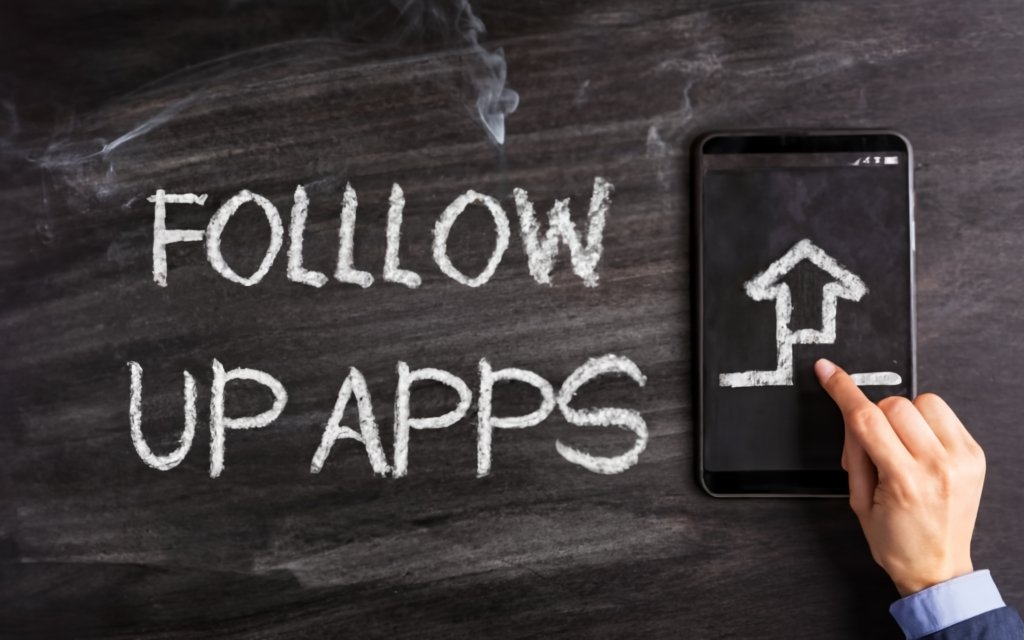
Top Follow Up Apps and Tools Compared
With so many options on the market, it can be tricky evaluating all the leading follow up apps to decide which one is the best fit. In this section, we’ll take an in-depth look at some of the most popular tools and how they stack up in terms of features and pricing.
FollowUp.cc
FollowUp.cc is one of the most well-rounded follow up apps available. It offers a deep feature set while still maintaining a user-friendly interface.
Overview and Key Features
Here are some of the notable features in FollowUp.cc:
- Email Reminders – Schedule reminders based on whether a prospect opens an email or replies. Great for nudging non-responders.
- Send Later – Easily schedule emails to be sent automatically at your preferred date/time.
- Email Templates – Create and customize templates to save time composing outreach.
- Open Tracking – See when your emails are opened to better understand engagement.
- CRM Integration – Connects with popular CRMs like Salesforce for contact syncing.
- Auto-Follow Ups – Set up automated email follow up sequences based on triggers.
- Snoozing – Temporarily snooze emails to come back to later with a reminder.
- Daily Summary – Get a daily email digest of your FollowUp activity and notifications.
- Salesforce Tab – Manage FollowUp tasks directly within Salesforce with the custom tab.
Overall, FollowUp.cc provides a complete follow up solution and deeper CRM integration than most competitors. The wide range of customizable automations makes it easy to create structured outreach workflows.
Pricing
FollowUp.cc offers several pricing tiers:
- Starter – $23/mo or $18/mo annually. Limited features.
- Professional – $36/mo or $29/mo annually. Full features and automations.
- Salesforce – $50/mo or $40/mo annually. Salesforce focused edition.
There is a free 14-day trial available on all plans.
Boomerang for Gmail
Boomerang is one of the most popular lightweight follow up extensions for Gmail.
Overview and Key Features
Some key aspects of Boomerang:
- Free Version – Boomerang has a permanently free version with basic scheduling.
- Email Scheduling – Easily schedule emails to be sent later from Gmail.
- Reminders – Get reminders to follow up if an email goes unanswered.
- Snoozing – Snooze emails out of your inbox and resurface them later.
- Insights – Provides read/response predictions to optimize your outreach.
- Recurring Sends – Schedule emails to be sent repeatedly on a custom cadence.
Boomerang is one of the simplest tools in terms of follow up automation. It’s ideal for users who want basic scheduling and reminders without complex workflows.
Pricing
Boomerang has four paid pricing tiers:
- Basic – Free. Limited scheduling and reminders.
- Personal – $4.99/mo or $49/yr. Adds read receipts and notes.
- Pro – $14.99/mo or $149/yr. Expands automation capabilities.
- Premium – $49.99/mo. For larger teams and workspaces.
SalesHandy
SalesHandy focuses on follow ups in the context of email sales outreach.
Overview and Key Features
SalesHandy provides:
- Email Scheduling – Schedule one-off emails or recurring email sequences.
- Email Templates – Custom email templates help standardize outreach.
- Mail Merge – Send personalized bulk outreach at scale.
- Tracking – See email opens, link clicks, and other engagement metrics.
- Workflow Automations – Create multi-step campaigns based on criteria.
- Lead Management – Lead scoring and pipelines to track prospect progress.
- SMTP Integration – Send using your own email address and domain.
The emphasis here is providing robust tools purpose-built for sales teams. Lead management and tracking capabilities are more advanced than more generalized apps.
Pricing
SalesHandy has volume-based pricing tiers:
- Up to 150 Emails/Month – $7/mo or $49/yr
- Up to 500 Emails/Month – $15/mo or $129/yr
- Up to 2,500 Emails/Month – $29/mo or $249/yr
- Up to 10,000 Emails/Month – $79/mo or $699/yr
Higher volume tiers are available for larger teams. Discounts apply for annual plans.
FollowUpThen
FollowUpThen is one of the most affordable and streamlined follow up services.
Overview and Key Features
With FollowUpThen you can:
- Schedule Reminders – Set reminders based on time or lack of response to an email.
- Recurring Reminders – Schedule reminders to repeat on a regular cadence.
- Response Detection – Get alerts when (or if) an email you send gets replies.
- Text Reminders – Get SMS reminders in addition to email alerts.
- Simple Interface – Mostly email-based interactions keep things straightforward.
FollowUpThen offers reliable set-it-and-forget-it style reminders without complex configurations. It’s built around the concept of interacting via email versus a robust web app dashboard.
Pricing
FollowUpThen has 4 pricing tiers for individuals and teams:
- Free – Limited reminders. Email-only (no SMS).
- Personal – $2/mo or $12/yr. Adds SMS and other features.
- Professional – $5/mo or $36/yr. For increased usage by individuals.
- Business – $9/mo or $72/yr. For larger teams and workspaces.
Salesflare
Salesflare is a sales-focused CRM with built-in follow up automation.
Overview and Key Features
Notable Salesflare functionality includes:
- CRM Database – Contacts, companies, and deals data all in one place.
- Email Tracking – See email engagement events for each prospect.
- Intelligent Nurturing – Automatically enroll prospects in tailored nurture tracks based on activity and engagement.
- Email Builder – Flexible email editor to create templates and one-off messages.
- Sales Playbooks – Configure multi-step sales processes to guide team members.
- Salesforce Integration – Bi-directional syncing with Salesforce data.
Salesflare aims to provide an all-in-one sales solution centered around robust follows ups tailored to each contact. The focus is on personalized engagement powered by insights and activity history.
Pricing
Salesflare has 3 main pricing plans:
- Team – $50/mo per user billed annually. Entry-level plan.
- Business – $75/mo per user billed annually. Adds team management capabilities.
- Professional – $125/mo per user billed annually. For larger teams and enterprises.
14-day free trials are available on all paid plans.
Vocus.io
Vocus.io balances affordability with a sophisticated feature set.
Overview and Key Features
Capabilities of Vocus.io include:
- Email Tracking – Track opens, link clicks, and replies for each email.
- Field Tracking – See contact field changes and updates.
- Mail Merge – Personalize and send bulk emails at scale.
- Auto-Follow Ups – Configure follow ups based on engagement events and triggers.
- CRM Integration – Automatic syncing with popular CRMs.
- Email Scheduling – Schedule sends one-time or recurring.
- Templates – Reusable email templates with dynamic placeholders.
For the price, Vocus.io manages to pack in robust tracking, automation, and integration features making it suitable for early-stage sales teams.
Pricing
Vocus.io pricing has 3 tiers:
- Starter – $5/mo per user billed annually. Entry-level features.
- Business – $10/mo per user billed annually. Adds automation and merge capabilities.
- Professional – $20/mo per user billed annually. For managing larger teams.
Gmelius
Gmelius is a highly-rated Chrome extension for Gmail power users.
Overview and Key Features
Gmelius enables:
- Template Library – Hundreds of pre-built email templates.
- Email Scheduling – Schedule sends one-off or recurring.
- Follow Up Reminders – Get reminders when emails go unanswered.
- Snoozing – Remove emails from inbox temporarily and resurface later.
- Tracking – See opens, clicks, and reply times for each email.
- Shared Inbox – Collaborate as a team via @mentioning teammates.
- CRM Integration – Sync contacts with systems like HubSpot and Salesforce.
Gmelius makes it easy to manage high email volume and streamline team collaboration, in addition to robust follow up functionality.
Pricing
Gmelius has 3 pricing plans:
- Free – Limited usage for individuals.
- Plus – $12/mo per user billed annually. For increased usage.
- Growth – $24/mo per user billed annually. For larger teams and workspaces.
14-day free trials are available on paid plans.
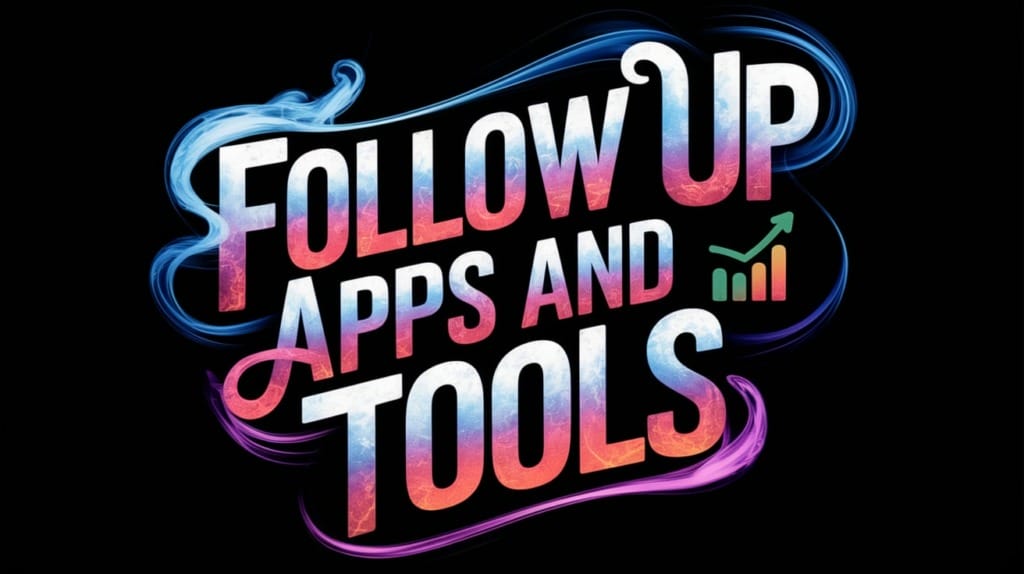
Key Factors to Consider When Choosing a Follow Up App
With so many options on the market, it can be overwhelming evaluating follow up apps to determine the right fit. Based on the most important criteria, here are 5 key factors to focus on during your selection process.
Integrations With Other Tools
For most businesses, a follow up app won’t exist in a bubble. You’ll want it to integrate with your other software like email, calendar, CRM, chat apps, and more.
Carefully review which third-party integrations are available for any app you’re considering. At a minimum, you’ll want integration with your primary email service and CRM if you use one.
Here are some common integrations to look for:
- Email – Gmail, Outlook, Office 365, Yahoo, etc.
- CRM – Salesforce, HubSpot, Zoho, Pipedrive, etc.
- Calendar – Google Calendar, Office 365 Calendar, etc.
- Chat – Slack, Microsoft Teams, etc.
- Support – Zendesk, Intercom, Help Scout, etc.
- Webinar – GoToWebinar, Zoom, Demio, etc.
Prioritize apps that integrate natively with your existing tech stack through official partnerships. You want tight, bi-directional integrations that transfer data seamlessly.
For any apps that don’t integrate natively, most should offer Zapier integration to connect using 1000+ other apps.
Email and CRM Platform Compatibility
While you want your follow up app to integrate with your email and CRM platforms, it also needs to be fully compatible.
For example, some apps only work as Chrome extensions rather than natively within Gmail. Others don’t reliably support Outlook or Exchange inboxes.
Carefully verify full compatibility and functionality with your specific email and CRM setup before making a purchase decision.
You don’t want workflows breaking or losing key features that you rely on. This alone can make some follow up apps completely unusable for your needs.
Automation Capabilities
The power of follow up apps comes from automation that takes work off your plate. Assess how capable and flexible each app is when it comes to automating workflows.
Here are some automation features to evaluate:
- Email Sequences – Send a pre-defined series of emails on a schedule.
- Triggers – Initiate automations based on events like email replies.
- Conditional Logic – Branch workflows based on criteria like field values.
- Lifecycle Stages – Move contacts through status-based pipelines automatically.
- CRM Workflows – Automate processes directly in your CRM.
- Approval Routines – Require sign-off before advancing a contact.
Prioritize apps that give you robust conditional logic for creating personalized, tailored sequences versus just simple preset drips.
Analytics and Reporting
A major benefit of follow up apps is the wealth of data they provide to refine your outreach strategy. The analytics and reporting functionality offered by each app can vary significantly though.
Some key analytics to look for include:
- Email open and click tracking
- Lead status and pipeline reporting
- Campaign response and conversion rates
- Email productivity metrics
- Lists and segments engagement
Consider how easy the app makes it to quickly visualize key data and turn insights into action. You want analytics that seamlessly integrate with your workflows rather than existing in silos.
Pricing and Plans
With most follow up apps, pricing scales upward based on volume, number of users, and features. Typical pricing models include:
- Per user, per month
- Tiered plans by number of emails/contacts
- Free or freemium options
- Annual vs. monthly billing
Take a close look at the details to understand exactly what you’re getting at each tier. Entry-level plans often have surprising restrictions or omissions compared to higher tiers.
Factor in potential cost savings from increased productivity and higher conversion rates when making ROI assessments of various plans. Time saved tends to vastly outweigh the software costs for mature organizations with established processes.
Many apps offer free trials which can be enormously helpful for experiencing the real workflows before committing.
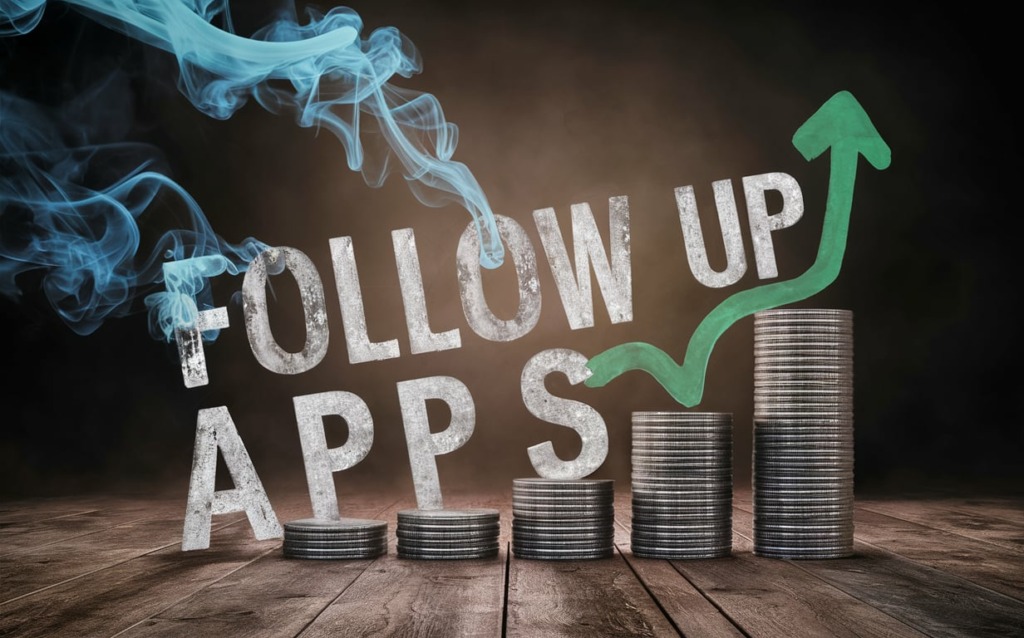
Setting Up and Using a Follow Up App: A Step-by-Step Guide
Once you’ve selected the right follow up software for your needs, it’s time to dive in and get everything configured seamlessly. Here is a step-by-step guide to go from signing up to sending your first automated campaigns.
Selecting the Right Follow Up App
If you haven’t already, your first step is researching the various options and selecting an app that best aligns with your goals, tech stack, and budget.
Refer to the product comparison section earlier in this guide to understand the pros and cons of leading solutions. Common factors to consider include:
- Integrations with your other tools
- Features like automation, reminders, scheduling
- Ease of use and intuitiveness
- Available support resources
- Pricing and plan options
Sign up for free trials with your top choices to experience the actual workflows first-hand.
Integrating With Other Business Tools
Once you’ve picked your app, integration is typically step one.
You’ll want to connect with email, calendar, CRM, and any other platforms you use regularly. This ensures data flows between systems and everything stays in sync.
Here are some tips for smooth integration:
- Use any official integrations before trying Zapier or IFTTT. Native connectivity is usually more reliable.
- When possible, opt for bi-directional integration that both sends and receives data between the platforms.
- Carefully check that all contacts, calendars, data fields are transferring as expected.
- Reauthenticate integrations periodically to keep tokens refreshing.
- Turn off native CRM follow ups if duplicative to avoid overlapping efforts.
- Consolidate multiple email addresses into shared inboxes.
Building Campaigns and Automations
This is where you design the actual follow up workflows to power your lead engagement. Think through the ideal cadence for your outreach based on business needs and contacts’ lifecycle stage.
Campaign best practices include:
- Customize messaging for different segments rather than blasting everyone.
- Use email templates to ensure consistency but customize subject lines.
- Make logical sequences based on typical buyer journeys.
- Send 3-5 emails spaced 2-3 days apart to non-responders.
- Try different follow up types like reminders, nudges, alerts.
- Integrate both automated and manual touchpoints for a balance.
- Point back to previous messages or attachments as needed for context.
Spend time perfecting your campaigns. This is the heart of follow up automation.
Tracking Performance and Optimizing
With your campaigns deployed, the app will handle sending all follow ups on autopilot. But your work isn’t done yet.
Regularly check your email and campaign analytics to identify opportunities for improvement. Common optimizations include:
- Tweaking your messaging, offers, subject lines based on response rates.
- Adjusting send times if low open rates.
- Removing contacts who consistently ignore messages.
- Changing cadence speeds if needed.
- Updating segments as prospects move through stages.
- Tracking ROI of your sales process as a whole.
- Automating additional scenarios like appointment confirmations.
Set calendar reminders to review data and refine your approach over time. Follow ups are never “set it and forget it.”
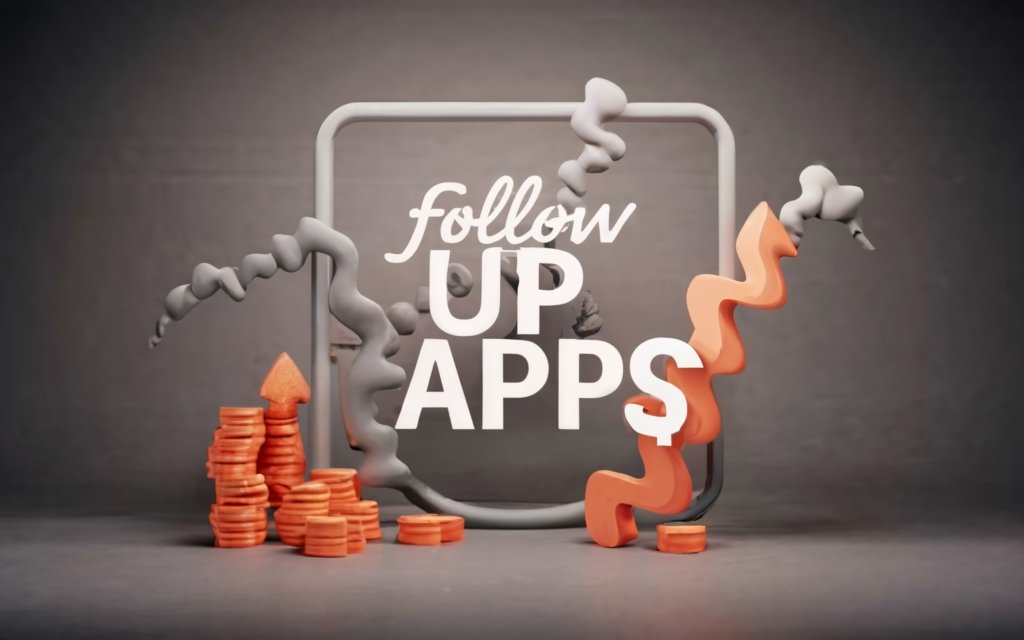
Tips for Getting the Most from Your Follow Up App
Follow up software can dramatically boost your sales pipelines and automation. But to maximize the impact, you need to use these tools strategically. Here are 4 tips to help you get the most value from your investment in follow up technology.
Personalize and Customize Outreach
One mistake companies make is taking a blanket “batch and blast” approach even when using follow up tools. But personalization has been proven to deliver up to 6x higher response rates according to Experian.
Leverage available merge fields, snippets, and conditional logic to tailor your outreach:
- Personalize subject lines with first names, company names.
- Use merge fields to reference previous conversations or meetings.
- Segment contacts based on attributes to deliver targeted messages.
- Vary message content, offers, calls-to-action depending on history.
- Customize follow up timing and sequences for key accounts.
The goal is to demonstrate you’re reaching out to individuals, not just sending canned campaigns. Personalization also boosts deliverability by avoiding spam filters.
Experiment With Subject Lines and Content
Follow up tools make A/B testing different approaches easy since you can set up multiple campaigns and let them run in parallel.
Try variations on:
- Subject line phrasing like questions vs. statements
- Subject line length – single phrase vs. full sentence
- Emotional appeals vs. logical reasoning
- Content formatted as bullets vs. paragraphs
- Offers and call-to-action placement
- Overall tone from formal to casual
Use open and click-through rates to understand what resonates best with your recipients. Apply the lessons more broadly to improve all of your outreach.
Useconditionals triggers
The power of marketing automation lies in sending hyper-targeted messages based on behaviors and conditions versus just date/time.
Some common smart triggers include:
- Following up when an opportunity reaches a certain age.
- Sending a discount after someone abandons a cart.
- Nurturing leads who visit a pricing page but don’t sign up.
- Activating contracts when a trial is nearing expiration.
- Recognizing loyalty program milestones.
Evaluate your typical customer journey to identify scenarios for Useconditionals outreach. This proactive approach keeps you in control of the narrative.
Analyze Metrics to Refine Approach
Marketers who simply set up follow up campaigns and move on are leaving money on the table. Consistently analyze performance data to identify winning approaches and areas for improvement.
Metrics to track include:
- Open, click-through, and response rates for each message and campaign.
- Sales velocity and deal values from leads in automated workflows versus not.
- Unsubscribe and complaint rates.
- Email productivity measured in outreach volume versus agent time spent.
- ROI of your sales and marketing process with full-cycle attribution.
Use dashboards, reports, and behavioral insights to tweak your messaging, offers, content types, and sequences for greater impact. Follow up is a iterative process.
The Future of Follow Up Apps and Tools
The follow up software landscape is constantly evolving as new technologies emerge. Here are some of the key innovations and improvements expected from follow up solutions in the near future.
Advancements in AI and Automation
Artificial intelligence already powers some areas of follow up apps, but capabilities are still relatively limited. Expect to see AI take a much more prominent role soon.
Possible applications include:
- Predictive lead scoring models that analyze dozens of engagement signals to identify hot prospects. This allows for more timely and contextually-relevant follow ups.
- Natural language processing to parse email and CRM data. The app would automatically update contact records and trigger appropriate workflows.
- Sentiment analysis to gauge a lead’s mindset and interest based on vocabulary and emotional tone used in communications. Follow ups are adapted accordingly.
- Chatbots that handle common questions and qualify leads 24/7. Highly qualified prospects get handed off to sales reps.
- Intelligent workflow adaptability that customizes sequences in real-time based on individual lead behavior.
As AI improves, expect your follow up tool to act as an automated assistant that handles more of the legwork independently.
More Robust Analytics and Insights
Follow up apps already incorporate metrics and dashboards but tend to provide a surface-level overview. Expect more sophisticated analytics similar to enterprise Marketing Automation platforms.
We’ll likely see:
- Customizable reports that empower users to perform ad hoc queries across data sets.
- Advanced segmentation capabilities like cohort analysis of high-performing groups.
- More holistic attribution modeling and multi-touch lead analysis.
- Integration of external data sources like ad platforms and web analytics for complete lifecycle visibility.
- Predictive analytics that forecast future lead behavior and optimal follow up strategies.
The goal is to provide analytics that move beyond description of what happened to prescription of what you should do next.
Deeper Integrations and Workflows
As follow up apps aim to become complete sales acceleration platforms, seamless integrations will be a key focus area.
Possibilities include:
- Shared workflows that span your CRM system and follow up tool.
- Two-way syncing with marketing automation platforms.
- Intuitive workflow builders with drag-and-drop simplicity.
- Embedded apps that allow managing follow ups directly within your CRM.
- Connectors to additional channels like live chat, help desks, and voice/video calls.
- Automations that hand off leads to sales reps at the optimal moment within an integrated environment.
The goal is creating unified systems that eliminate data silos and bottlenecks.
Focus on Deliverability and Inboxing
The entire value of follow up campaigns rests on emails reliably reaching recipient inboxes. Expect deliverability to receive lots of attention.
We’ll likely see:
- Integrated email validation to maintain list hygiene.
- Tools to track sender reputation and monitor blacklist statuses.
- Warm up capabilities for new domain IPs to improve trust and reduce blocking.
- Segmentation based on engagement to remove non-interacting contacts.
- Custom tracking domains for consistent brand recognizability.
- Templates optimized for spam testing.
The focus will be not just automating more messages, but automating deliverability best practices to inch open and response rates upwards.
In summary, the future pace of innovation in follow up technology shows no signs of slowing down. Adoption of these tools will continue growing as businesses recognize the game-changing ROI potential.
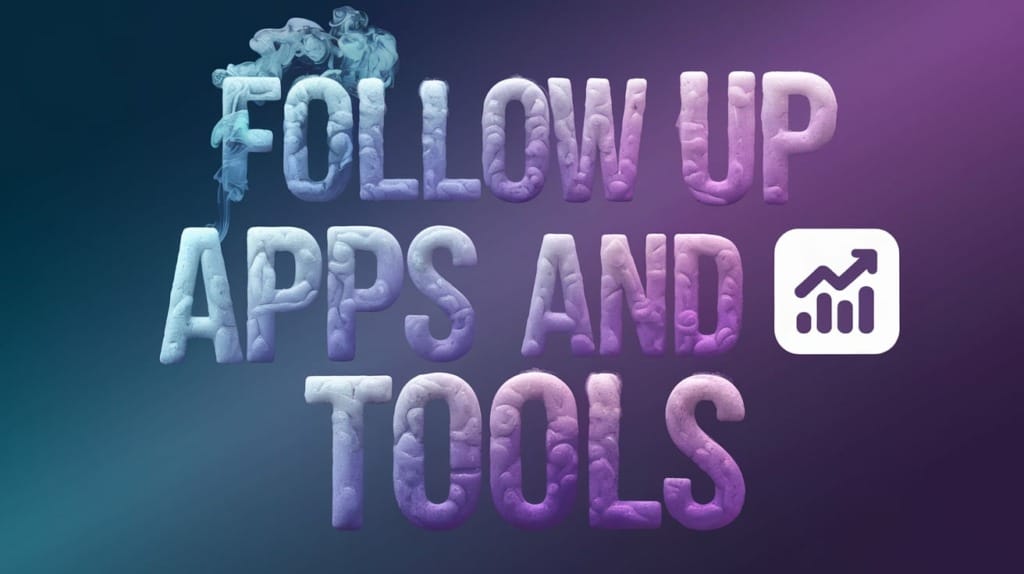
Key Takeaways
Follow up apps provide invaluable automation to help you nurture leads, drive more sales, and stand out from the noise. Here are the key lessons:
- Follow up apps send scheduled reminders, alerts, and sequences to prospects when you need a nudge. This prevents dropping the ball on important sales opportunities.
- Features like email templates, CRM integrations, open/click tracking, and analytics help streamline coordination and optimize efforts.
- Overall, setting up structured follow up campaigns typically generates 10-30% more connections and 5-15% higher conversion rates.
- Choosing the right follow up app depends on your budget, feature needs, tech stack, and volume. Weigh factors like automation, deliverability, and ease of use.
- Once implemented, take advantage of segmentation, personalization, and testing capabilities to refine your approach for greater impact.
- Consistently analyze performance data and metrics to identify areas for optimization. Follow up is an iterative process, not set-and-forget.
- Future innovations like AI and better analytics will unlock even more potential from these tools. Expect the market to keep maturing rapidly.
The bottom line is that follow up apps level the playing field for small teams. They provide enterprise-grade capabilities that simply weren’t accessible just a few years ago. The growth opportunities are too compelling to ignore.
Here are some additional frequently asked questions about follow up apps:
Frequently Asked Questions
Q: What happens if I go over email limits on my plan?
A: Most apps will either block sending until the next billing cycle, or charge overage fees based on usage. Check each app’s specifics, as some may simply deliver emails without engaging contacts.
Q: Can I create my own custom follow up app workflows?
A: Yes, most tools allow you to build sequences from scratch or edit existing templates. Workflows can be as simple or complex as needed.
Q: How do I import my existing contact database into the app?
A: All follow up apps can import CSV or Excel contact list files. Many also allow directly syncing contacts from major CRMs like Salesforce.
Q: What results have other businesses seen from using follow up apps?
A: On average, businesses see a 10-30% increase in prospect engagement, 5-15% increase in sales conversions, and 30-60% faster follow up task times.
Q: Can I segment my lists based on attributes like location, role, lead score etc?
A: Yes, all the major apps provide robust segmentation and tagging capabilities to group contacts based on attributes for targeted messaging.
Q: Are there industry-specific follow up apps available?
A: Yes, there are solutions tailored for real estate, healthcare, higher education, and other verticals that provide industry-optimized workflows.
Q: What email deliverability protections do these apps provide?
A: Features like list cleaning, warmup sending, dedicated IPs, and engagement monitoring help maximize inboxing rates and avoid spam filters.
Q: Can I scale up these tools as my business grows?
Absolutely, the platforms are built to scale. As your needs evolve you can upgrade plans or editions to handle larger volumes and more sophisticated use cases.

